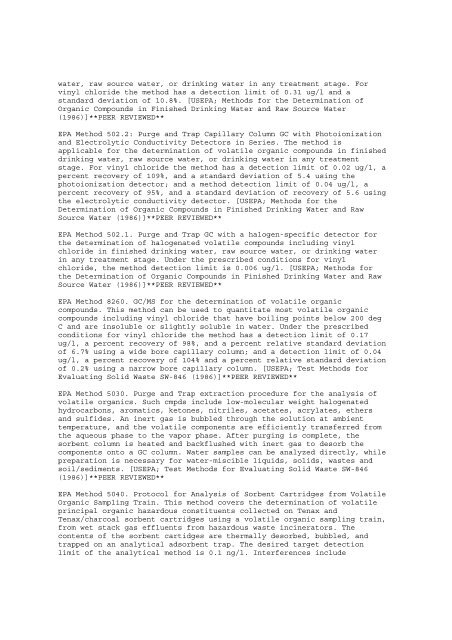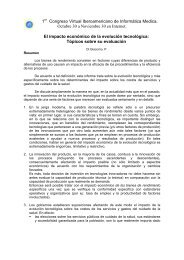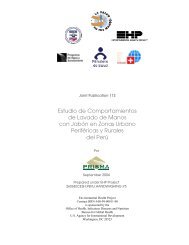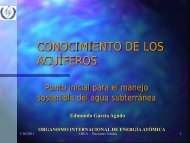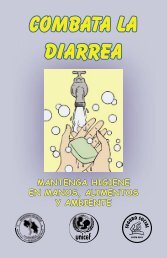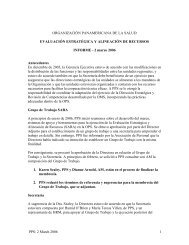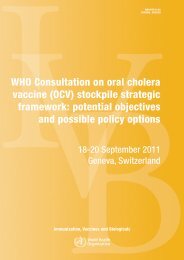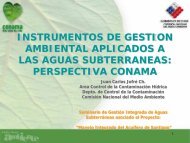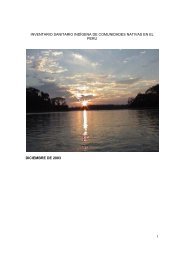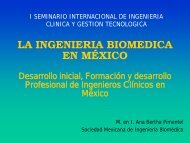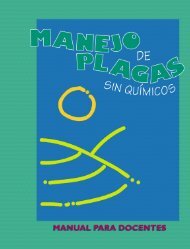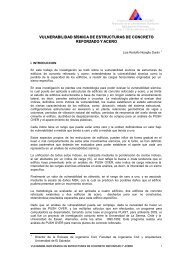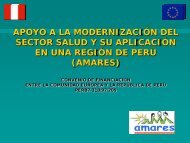a database of the National Library of M
a database of the National Library of M
a database of the National Library of M
Create successful ePaper yourself
Turn your PDF publications into a flip-book with our unique Google optimized e-Paper software.
water, raw source water, or drinking water in any treatment stage. Forvinyl chloride <strong>the</strong> method has a detection limit <strong>of</strong> 0.31 ug/l and astandard deviation <strong>of</strong> 10.8%. [USEPA; Methods for <strong>the</strong> Determination <strong>of</strong>Organic Compounds in Finished Drinking Water and Raw Source Water(1986)]**PEER REVIEWED**EPA Method 502.2: Purge and Trap Capillary Column GC with Photoionizationand Electrolytic Conductivity Detectors in Series. The method isapplicable for <strong>the</strong> determination <strong>of</strong> volatile organic compounds in finisheddrinking water, raw source water, or drinking water in any treatmentstage. For vinyl chloride <strong>the</strong> method has a detection limit <strong>of</strong> 0.02 ug/l, apercent recovery <strong>of</strong> 109%, and a standard deviation <strong>of</strong> 5.4 using <strong>the</strong>photoionization detector; and a method detection limit <strong>of</strong> 0.04 ug/l, apercent recovery <strong>of</strong> 95%, and a standard deviation <strong>of</strong> recovery <strong>of</strong> 5.6 using<strong>the</strong> electrolytic conductivity detector. [USEPA; Methods for <strong>the</strong>Determination <strong>of</strong> Organic Compounds in Finished Drinking Water and RawSource Water (1986)]**PEER REVIEWED**EPA Method 502.1. Purge and Trap GC with a halogen-specific detector for<strong>the</strong> determination <strong>of</strong> halogenated volatile compounds including vinylchloride in finished drinking water, raw source water, or drinking waterin any treatment stage. Under <strong>the</strong> prescribed conditions for vinylchloride, <strong>the</strong> method detection limit is 0.006 ug/l. [USEPA; Methods for<strong>the</strong> Determination <strong>of</strong> Organic Compounds in Finished Drinking Water and RawSource Water (1986)]**PEER REVIEWED**EPA Method 8260. GC/MS for <strong>the</strong> determination <strong>of</strong> volatile organiccompounds. This method can be used to quantitate most volatile organiccompounds including vinyl chloride that have boiling points below 200 degC and are insoluble or slightly soluble in water. Under <strong>the</strong> prescribedconditions for vinyl chloride <strong>the</strong> method has a detection limit <strong>of</strong> 0.17ug/l, a percent recovery <strong>of</strong> 98%, and a percent relative standard deviation<strong>of</strong> 6.7% using a wide bore capillary column; and a detection limit <strong>of</strong> 0.04ug/l, a percent recovery <strong>of</strong> 104% and a percent relative standard deviation<strong>of</strong> 0.2% using a narrow bore capillary column. [USEPA; Test Methods forEvaluating Solid Waste SW-846 (1986)]**PEER REVIEWED**EPA Method 5030. Purge and Trap extraction procedure for <strong>the</strong> analysis <strong>of</strong>volatile organics. Such cmpds include low-molecular weight halogenatedhydrocarbons, aromatics, ketones, nitriles, acetates, acrylates, e<strong>the</strong>rsand sulfides. An inert gas is bubbled through <strong>the</strong> solution at ambienttemperature, and <strong>the</strong> volatile components are efficiently transferred from<strong>the</strong> aqueous phase to <strong>the</strong> vapor phase. After purging is complete, <strong>the</strong>sorbent column is heated and backflushed with inert gas to desorb <strong>the</strong>components onto a GC column. Water samples can be analyzed directly, whilepreparation is necessary for water-miscible liquids, solids, wastes andsoil/sediments. [USEPA; Test Methods for Evaluating Solid Waste SW-846(1986)]**PEER REVIEWED**EPA Method 5040. Protocol for Analysis <strong>of</strong> Sorbent Cartridges from VolatileOrganic Sampling Train. This method covers <strong>the</strong> determination <strong>of</strong> volatileprincipal organic hazardous constituents collected on Tenax andTenax/charcoal sorbent cartridges using a volatile organic sampling train,from wet stack gas effluents from hazardous waste incinerators. Thecontents <strong>of</strong> <strong>the</strong> sorbent cartidges are <strong>the</strong>rmally desorbed, bubbled, andtrapped on an analytical adsorbent trap. The desired target detectionlimit <strong>of</strong> <strong>the</strong> analytical method is 0.1 ng/l. Interferences include


